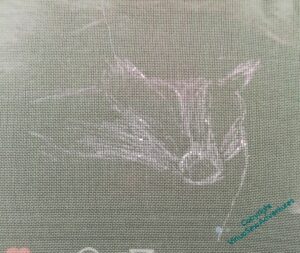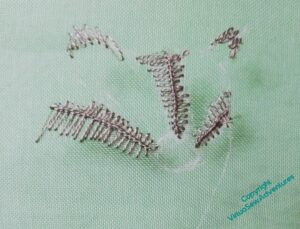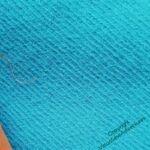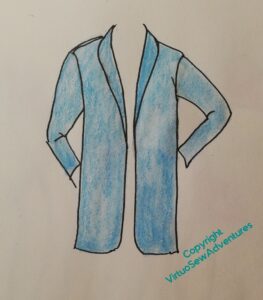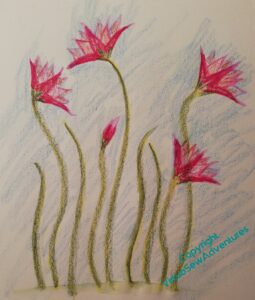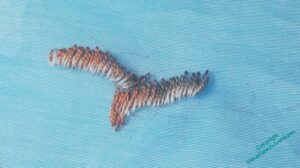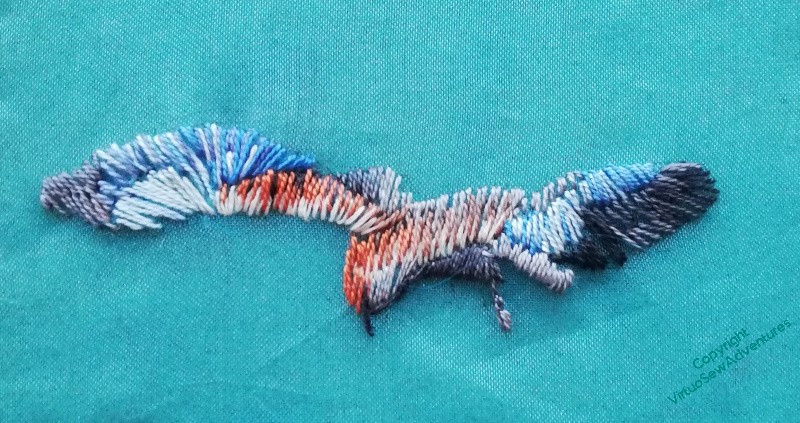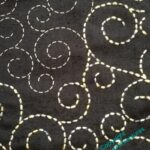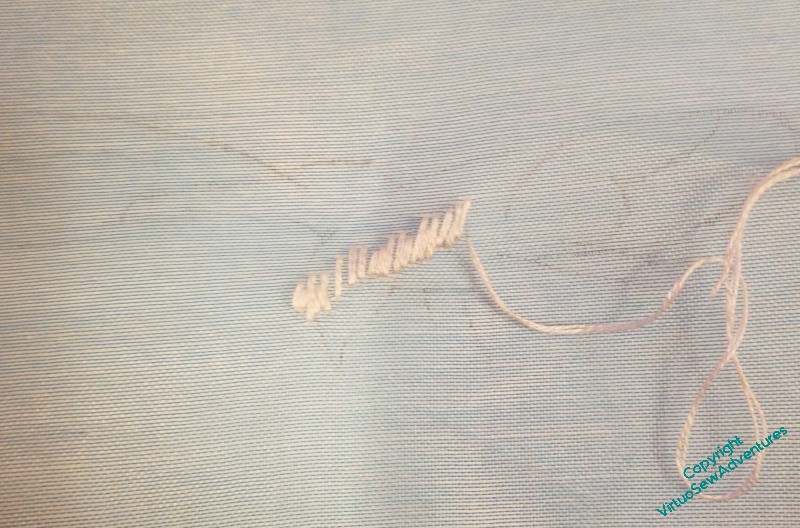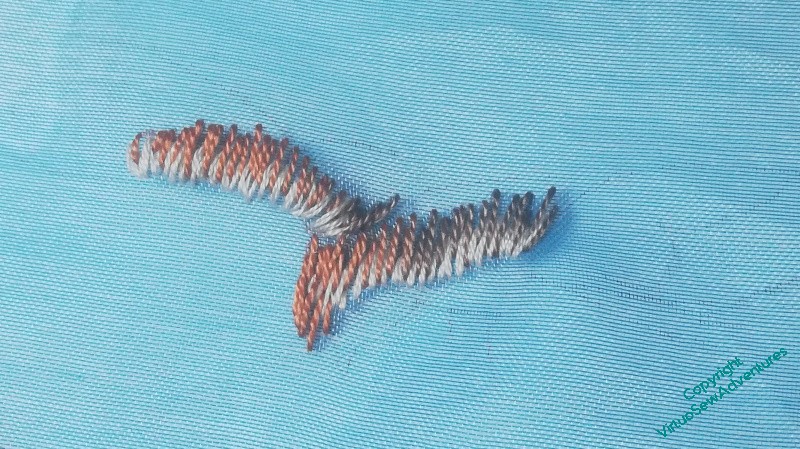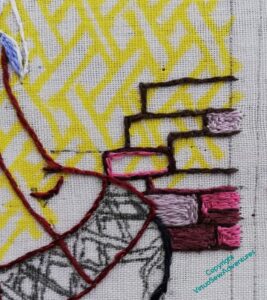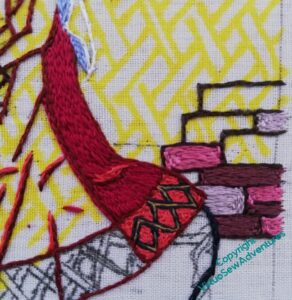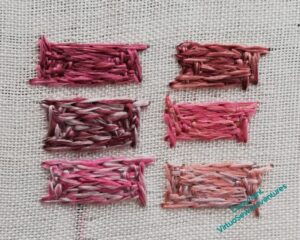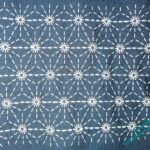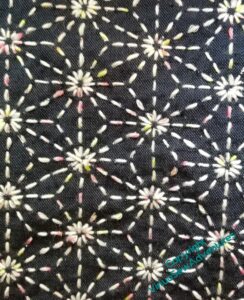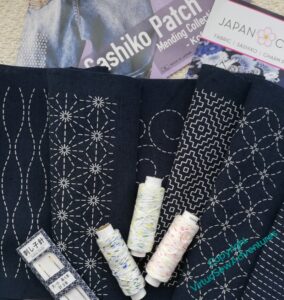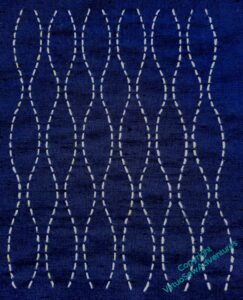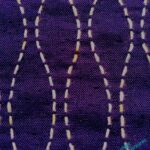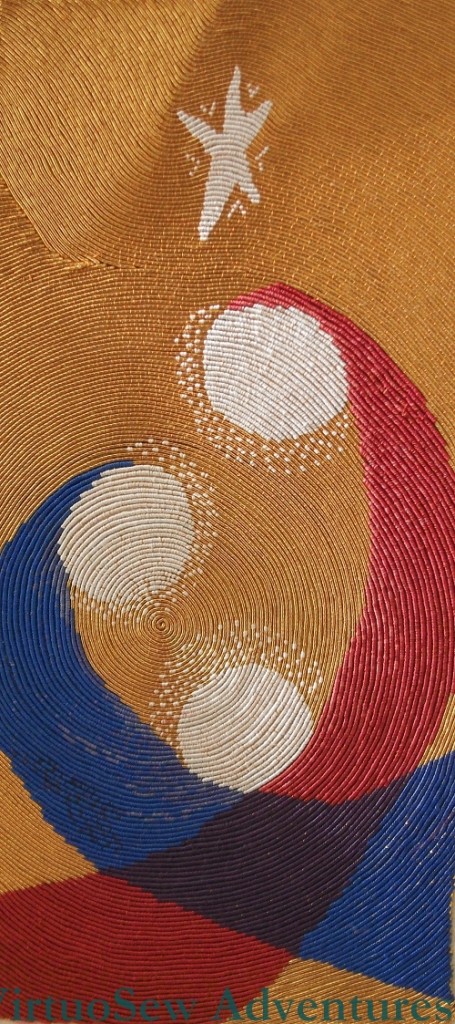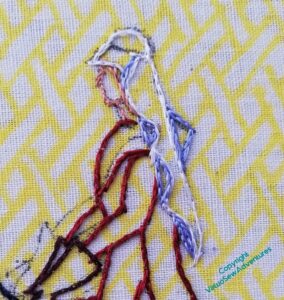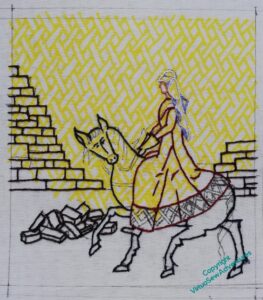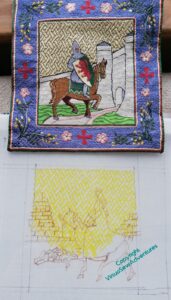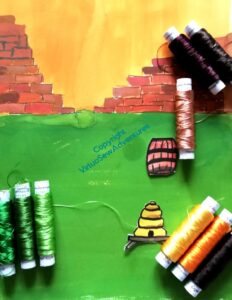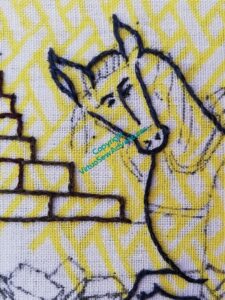Category: General Embroidery
Another observing animal for Placidus
Elizabeth Goudge’s book “The Herb of Grace”, which gave me the idea for Placidus, is set in a pilgrim inn near to some ancient woodland, and in her writing she regards the trees and animals of that woodland as very much part of the world the family inhabits. She wouldn’t, I’m sure, have considered herself an environmentalist, but only because she probably couldn’t imagine considering herself as other than part of the natural world. Certainly the fictional fresco maker she imagines would have done so.
My reboot over the period between Christmas and Epiphany has suggested that since I want to have a welter of animals observing the scene, maybe I should just start on them. Once I have enough to make a start, that might help me with the trees, the rocks, and the stream. Then Placidus with his horse and hounds, and the stag will have somewhere for their drama to take place.
It was the Herb of Grace that told me of the word “brockis” as an old name for a badger, and over on Patreon, the writer Anne Louise Avery has a character she calls “Grey Brock”, whose adventures are often illustrated with a photo of a badger paying very close attention. I’ve used that photo as my starting point, and sketched my brockis on some green gauze (on a frame, this time!) using a white gel pen.
And can we just pause there to celebrate the fact that I sketched this, freehand, on a difficult surface with an indelible pen, and ended up with a recognisable badger? Even last year, I don’t think I’d have managed it!
The animals are going to be quite experimental, I think. Certainly there won’t be a lot of long and short stitch. I want a lot of rough and ready texture and an excuse to experiment.
So the first layer of my brockis is actually vandyke stitch in a middling creamy beige that will help, I hope, to create some depth in his fur.
Lotus Flower Coat – starting to plan..
When we visited last year, my aunt gave me a lovely length of faience blue tweed, and although I could, of course, make a skirt (another skirt!), the idea eventually came to me to make it into a sort of cross between a cardigan and a jacket – something that I can wear with lots of things, that makes a good additional layer in our cold house, but looks cheerful and casually smart.
I thought about the colour, and some variant on the Egyptian Lotus Flower pattern seemed like a good start. Then I thought some more, and decided that the very graphic, formalised versions used in border patterns would want to be used formally and make the garment too formal. The tweed is relatively unfulled, and widely sett, so anything too structured won’t work well.
Something like this, I think. It’s a Simplicity pattern from the Seventies or early Eighties, and it won’t be hard to lengthen. It will be lined (which the pattern doesn’t call for), but there are few pattern pieces and almost no shaping.
Naturally, it won’t be going to go undecorated…!
Maybe a border pattern?
Somehow, no. I’ve not done one before – the Coat of Many Flowers has a swathe across the middle, and the Jacket of Many Stitches has the pattern dripping down from the shoulders – but I think it might end up looking a bit obvious, and a bit formal. I’ll still think a bit more about this one, but I’m pretty sure it won’t be this.
Watch this space, as they say…
Hawk in a clear blue sky…
A good, optimistic start to the creative year, here, with my first bit of stitching for Placidus – who’s only been in the planning stage for a decade or so!
You will see from the progress pictures that I was absolutely rocketing along the edge of catastrophe curve here, very little planning, and just alternating staring at my source and stitching. This is the way I tackled Ankhsenspaaten, and a few other pieces, and it’s very much the way I prefer to paint. But it’s highly uncertain as to success, and I may come back in a few years and try again.
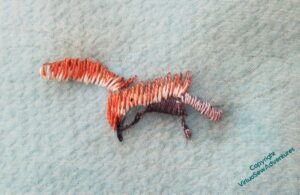
Clicking through will show you how little guidance I’d put on the gauze, and how little it showed once there. Furthermore, I was in such a fever of impatience to start that I used neither frame nor hoop, working in the hand instead. I won’t do that again.
(Until next time I do it..)
I’ve mostly used silk perle, which is lovely, and the particular bundles I’m using I’ve had in my stash for decades. I use it, but it’s quite fine, and until recently I’ve preferred to work with rather more solid materials. We also discovered, when my grandfather’s carer boil washed a tray cloth I’d embroidered for him, that the colours aren’t washfast. Not a problem in this case: a panel hanging on the wall, using a wild mix of materials, is unlikely to be boil washed unless by someone deliberately seeking to destroy it.
In the meantime, if it is to work in the eventual piece, it will need to be savagely blocked or pressed to get the crinkles out of it – not because my tension was tight, but because the stitching is filling up the spaces between the fabric threads and making them move and misbehave.
I don’t mind – I’ve already pinned it out, and I’m just so pleased to have made a start on the Vision of Placidus at last!
Update: I showed this to The Australian, who immediately started singing the Hawthorn team song (Australian rules football). Go, Hawks!
Rebooted!
Having a Twixmas project has become part of my year for more than one reason. Firstly because usually I have to hide away my main project, as the table I work beside takes the Christmas tree. But secondly, and in some ways more importantly, it helps me “reboot” myself. Last year in particular, I ran out of “me” before I ran out of year, by quite a few weeks, and sitting quietly doing something I didn’t have to do any planning for turned out to be a proper reboot.
Because I’ve come up with ideas for making progress with Placidus, who’s been losing forward momentum for quite a while, as well as having ideas for another embroidered coat..
Placidus first. We’ve been remembering the description of the fresco in “The Herb of Grace”, and it’s slightly mad, the characters of Placidus, his horse and dogs, and the stag all a bit big and out of scale with the forest, and with little vignettes of animals in the spaces in the canopy.
Placidus had stalled because I’d got caught up in having the design planned out before I started. It’s going to be a big design, and for all my drawing and design skills have improved enormously over the years, a very taxin one. So, the reboot is to do what I did, in fact, with Amarna – start doing fragments that will be part of it, and worry about assembly when I get there.
Shortly after having that thought, I found myself watching a documentary in which Hamza Yassin was on the track of Britsh birds of prey, and remembered a bit of blue gauze I have in my stash.
Well, now.
So I started with pausing the documentary and taking a few photos of one of the hawks. Then I found the gauze and drew a very light outline in one corner of it. I’m going to be freestyling this one – part of continuing the reboot and reminding myself of my True Love in stitching.
Having Doubts…
You may recall that I became concerned about the wall and the colours beside Aethelflaed’s riding dress. I filled in some stones, and had even more doubts.
Cheshire sandstone is an absolute horror to depict in stitch or paint – every time I’ve tried in the past I’ve missed in one direction or another. So I’m not especially concerned that this version is proving exasperating too. I just need to find a way to create something I can live with. And indeed, something that Aethelflaed can live with!
The sensible thing seemed to be to do the back panel of the dress and then look seriously at the combination. So here we are, back panel of the dress, including the bright, dramatic, interlaced pattern on the border.
I do need to retweak the highlight on the skirt, somehow, but I have dress and the border in place, and I think the wall colours are definitely going need a bit of tweaking.
So with the idea in mind of blending colours to make the walls sit back from Aethelflaed a little more quietly, I did some experimentation.
Now I have to make some decisions, of course!
Sashiko – something more complicated
I said the next one would be rather more complicated, didn’t I..!
The pattern is vaguely floral or vaguely snowflakelike, depending on your sensibilities. Since I’ve been finding it very hard to work out which line I’ve done and which I haven’t, loooking at the front, I thought the best thing to do would be to show progress from the back. Please forgive the changing colours – I refer you to the light in rainy Decembers in England!
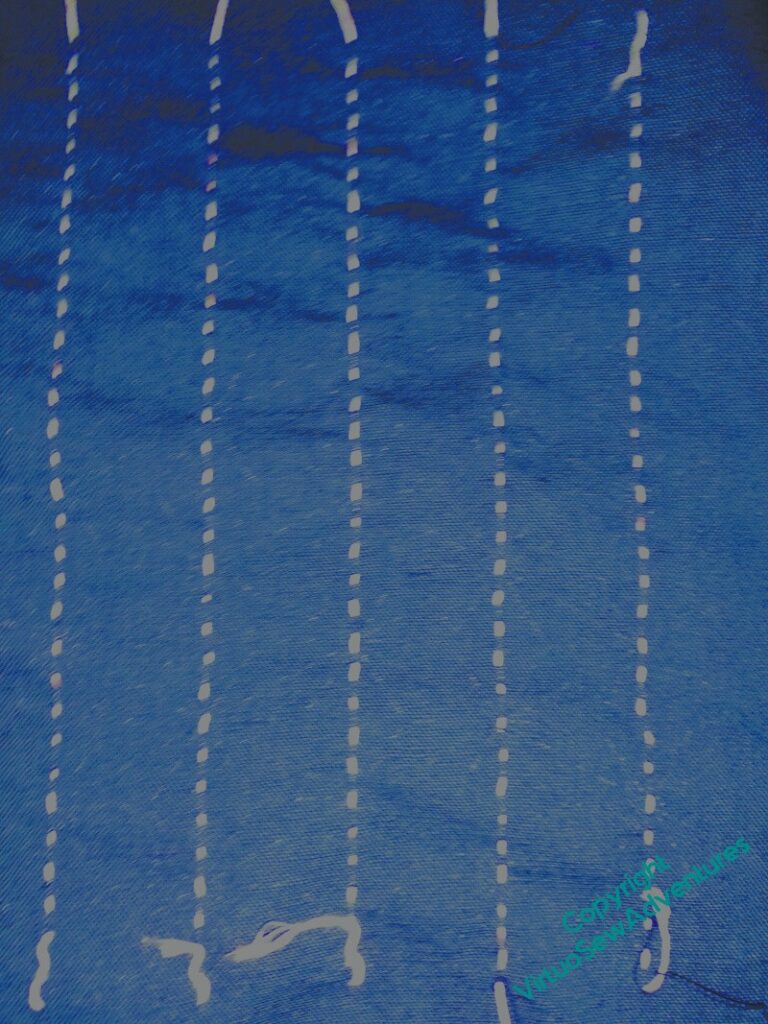
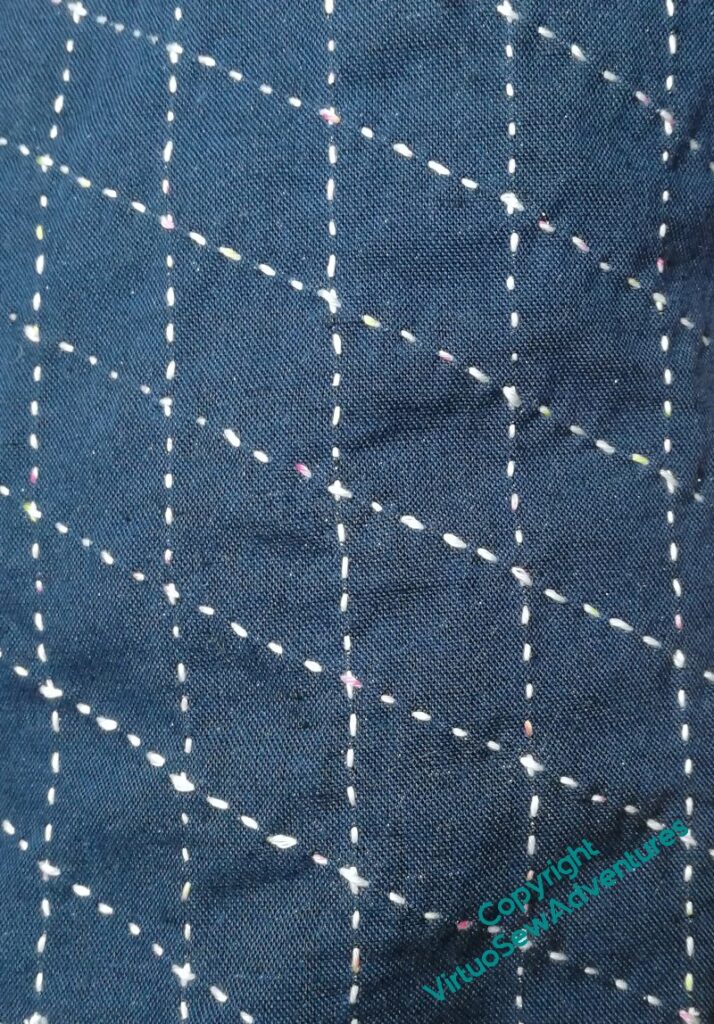
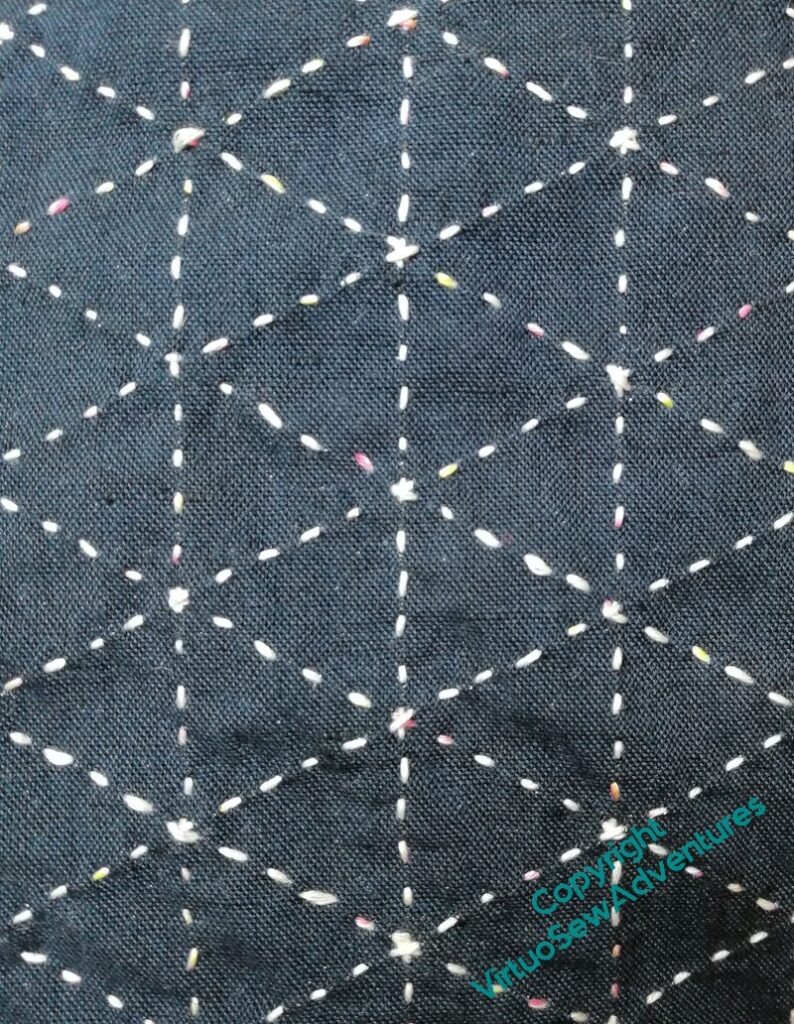
When I got to the middle of the sequence, I started to have doubts about how I was going to finish the pattern in a neat and tidy fashion, and I was wondering whether I was missing something or it was really going to be a bit messy on the back.
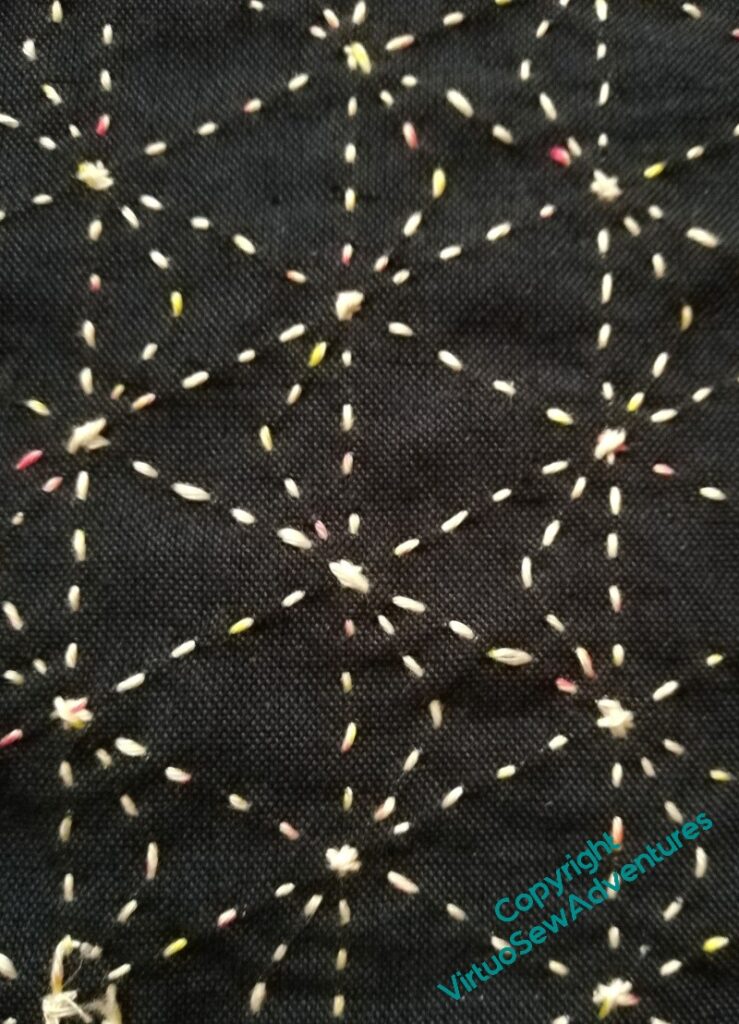
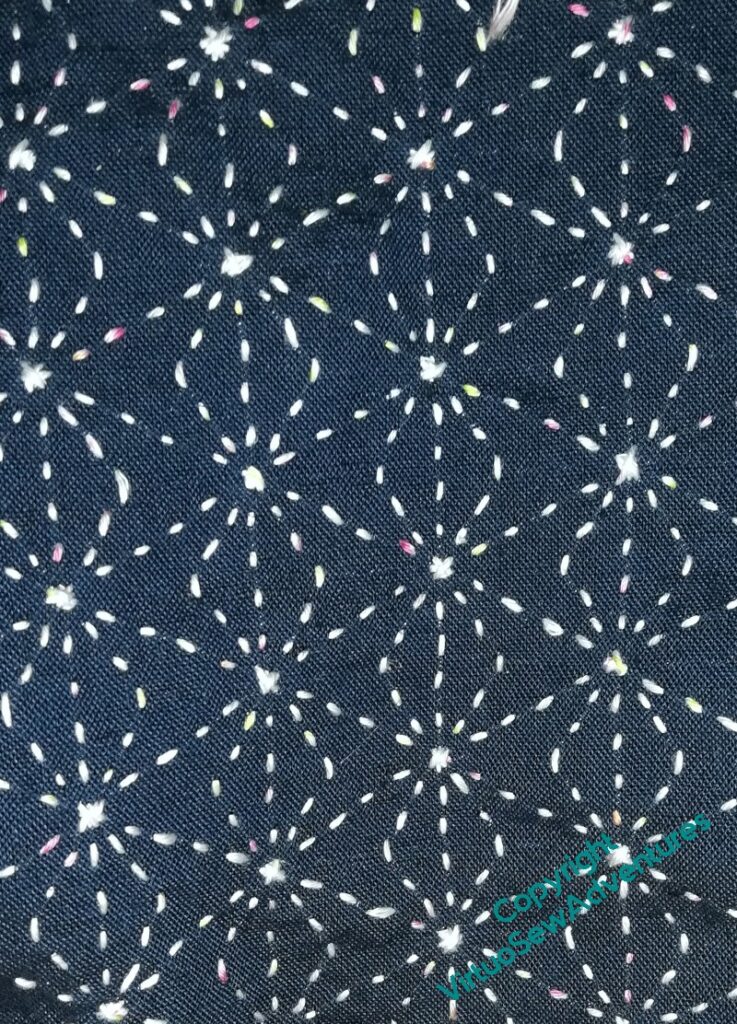
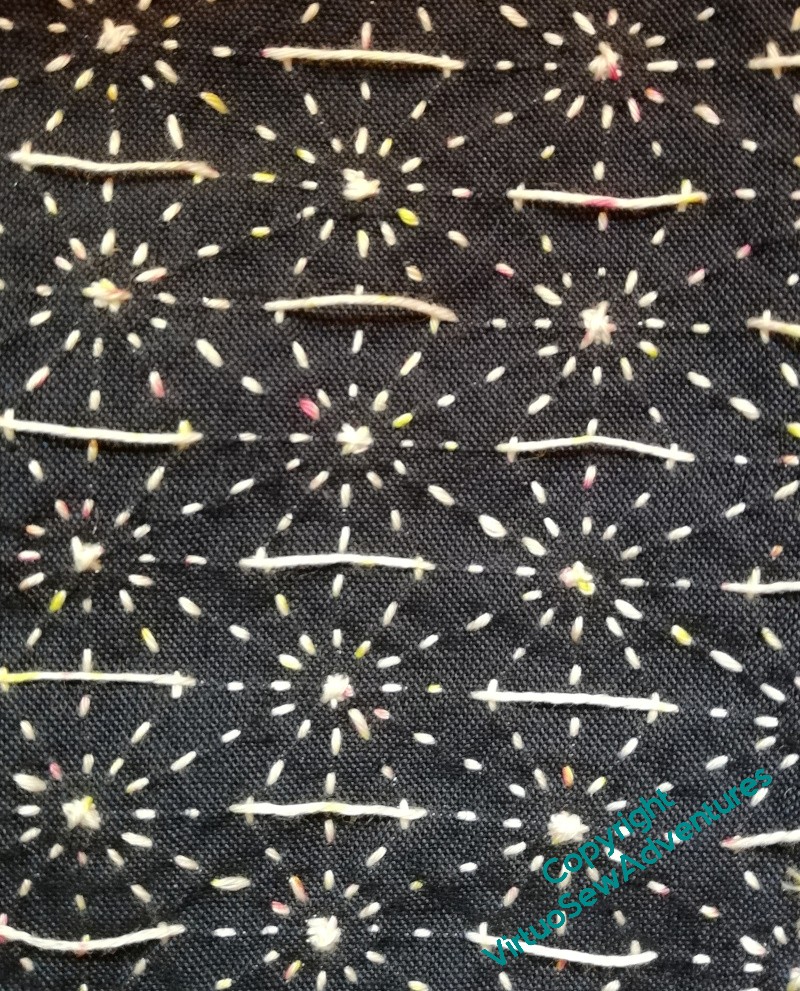
Then it occurred to me that I have a graph theorist in the house (The Australian), so I consulted him. I explained what I’d understood to be the principle, and that I was afraid I would have to have long floats on the back. The Australian looked at the pattern, pointed, and said “There’s a degree three vertex there, so yes, you’ll have some long floats!”
As indeed I did.
But it does look pretty when it’s done, doesn’t it!
Sashiko – following instructions for a change!
You may recall that for the past few years, for the period between Christmas and New Year, I’ve bought myself a kit, or put together a kit, of something I don’t usually do, that will involve me in following instructions. So, for this year, when I went to the Harrogate Knitting and Stitching Show in November, I bought myself a “Sashiko Patch” packet, some thread, and some needles – quite long needles, and quite strong, because the idea is to rock the needle through the fabric to take several stitches before pulling the thread through – so I was told.
When I opened the packet, I discovered that there weren’t really any instructions, but as I understand it sashiko is worked in rows of running stitches that cross each other to create the finished pattern.
Or not. The first one I tackled was relatively simple, single rows of running stitches in a wavy configuration. I think the finished effect is a bit like a very stylised bark pattern, and it went quite quickly.
The next one (see the fabric in the first picture) isn’t going to go nearly so quickly…!
Aethelflaed Begins to Progress..
The first stage is to outline everything, so here goes…
Since a white veil would have been an important part of the outfit, I’ve made sure the shadows are outlined in blue. That will make the white seem whiter, making the day seem sunnier.
I’ve given her mittens, rather than gloves – that may be cowardice (no fingers to do!) – but it will make for simpler shapes. How much the Medieval Movers and Shakers will wander from a truly medieval style and sensibility, I don’t know as yet, but I’m trying to keep my wanderings within reason.
Anyway, here we are, all principle outlining completed.
It barely shows, but the stones are outlined using three different shades of dark brown. It shows a little more in real life, and it might helpd to create slightly different impressions on patches of stonework. We’ll have to wait and see about that!
I’ve left the horse’s headstall and harness unstitched – I’m going to stitch that over the top of the main horse stitching.
I’ve not really tackled the grass, even in thought. I’m intending to make it tussocky – another contrast with William Marshall, approaching his kinsman’s well-kept castle, with undergrowth kept back from the walls. But how – I’ve no idea as yet!
I have another problem, anyway. I’ve started to put the walls in, and I’m more than a little concerned that the contrast of the stonework, if I continue like this, is going to be much too high, pulling the wall forwards and dominating the picture.
I can’t have that – Aethflaed is the one I want people to see. Her work comes after her.
So now I’m wondering about blending the colours to soften the change. That feels like a rather un-medieval thing to do, somehow, so I have to decide whether that’s a point I’m willing to concede.
Raising A Needle At Last
Having at last settled on a design for Aethelflaed, there was a certain amount of jockeying around to get the size right and everything in order to start stitching.
As you can see, I’ve got William prepared to be mounted, but he’s still unmounted, which makes him easy to compare. The direction of the designs are contrary, there will be more red and brown in Aethelflaed, and I think the white horse will be rather necessary to help lift it.
You will see that I’ve already added the guidelines for the planned basketweave underside couching. I found adding them later really nerve-wracking, so this time I put that in first, and then the important bits of design went over the top, in a different colour and more precise line..
I was able to gather some of the threads from among those I used for William, which has helped. Partly because it’s always good not to have to buy more than you need, but also because it will help the series “talk” to one another if the palette of colours has some continuity. And then some of the others were passed on to me by Sue from TortoiseLoft (thank you, Sue!).
It has occurred to me (very recently) that if I keep the same blue background in the border, that will also keep the conversation going among the designs. I’m also considering winding the roses around the barrels and skeps, again to keep the conversation going.
But finally – FINALLY!! – I’ve managed to get started!
I’ve used three different browns in the outlines of the stones of the wall, and a very dark blue-grey for the horse.
There’s much more to do, but my goodness, I’m glad to have begun. I know Aethflaed must have been feisty but her embroidered representation has been living up to every bit of it.
Now, what would she have called her horse?

